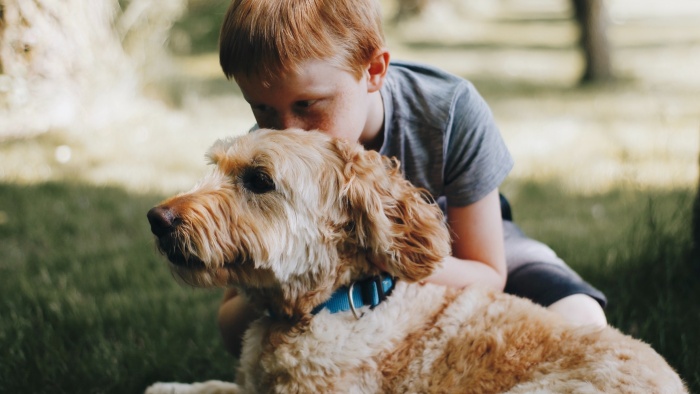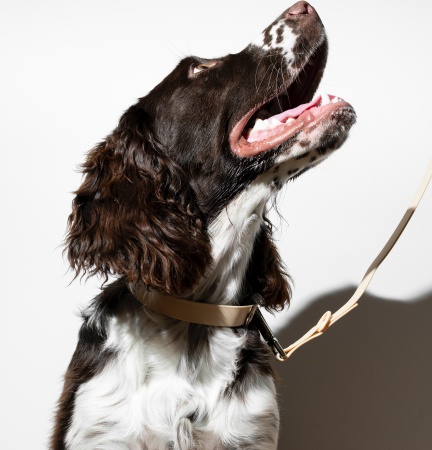
Diy PVC Dog Bed:A Mini Guide
DIY PVC dog bed is a wonderful way to show appreciation to your canine companions, who are undeniably man’s best friends. These loyal pets provide

The ‘place command for dogs‘ became essential in my house whenever the doorbell rang, triggering a frenzy from my dogs, whether it was my kid’s friends or the UPS man. Can you relate to chaos? I was often caught yelling at the dogs to be quiet and lie down, all while attempting to ‘welcome’ our guests.

Such a scenario is hardly welcoming, is it? The embarrassment caused by my mischievous dogs was quite palpable for me, at least until we started incorporating place training. This Dog Place Command turned out to be a game-changer.
We usually focus on commands like sit, stay, and down as the basics for dog training. Yet, I firmly believe that place training should be at the forefront of your training priorities.
The PLACE command involves training your dog to move to a designated area, such as a dog bed, a mat, a raised platform, or a specific board. It’s similar to instructing them with a phrase like “go to your bed”. However, it’s important to distinguish this from a vague “go lay down”, as PLACE is more specific.
In our home, we have several spots designated as the dog’s “place”, primarily their dog beds. I’m also considering investing in a specialized dog training place board. During meal times, we use the kitchen rugs as their designated area.
Variations of the place command include terms like “go to bed” or “mat training”. The core principle remains the same: the dog stays in the assigned spot until given permission to leave.
The place command is a versatile tool that can be employed in numerous scenarios to manage your dog’s behavior. Here are some instances where it has proven to be invaluable:

Here is an excellent video from Top Dog Professional Training demonstrating the Place Command in action:
It’s crucial to ensure safety for both you and your dog during training sessions. Here are some important safety tips to keep in mind:

I’d love to hear from you in the comments below. Are you planning to teach your dog the ‘place command for dogs‘? I make it a point to respond to all comments, so let’s spark a conversation… Your experiences or queries might just help someone in a similar situation.
P.S. In our home, we primarily use our dog beds in the living room for this training, though many trainers suggest using a place board or a training mat for a clearer boundary understanding for your dog. I confess, our dogs occasionally sneak a paw off the bed, or even try to wriggle their way off. But honestly, I’m content as long as they’re still making some contact with the bed 🙂
FAQ 1: Is the place command suitable for dogs of all ages?
Yes, the place command can be effectively taught to dogs at any age. However, the training approach might vary slightly depending on the dog’s age, with puppies requiring shorter, more frequent sessions and older dogs possibly needing more patience due to established habits.
FAQ 2: How long does it typically take for a dog to master the place command?
The time it takes for a dog to master the place command varies based on the individual dog’s temperament, age, and consistency of training. Most dogs start showing understanding of the command within a few weeks, but full mastery can take several months of consistent practice.
FAQ 3: Can the place command help with separation anxiety in dogs?
While the place command itself is not a direct treatment for separation anxiety, it can help create a sense of security and calmness in dogs. Having a designated ‘safe space’ can be comforting to a dog when they are left alone.
FAQ 4: What if my dog refuses to stay on the mat or bed?
If your dog is struggling to stay on the mat or bed, it’s important to go back to the basics. Shorten the duration initially and gradually increase it. Ensure you’re not moving away too quickly and use high-value treats to motivate your dog to stay.
FAQ 5: Are there any specific breeds that find the place command more challenging?
While some breeds may be more predisposed to certain behaviors, the place command can be taught to any breed. Breeds with higher energy levels or those that are more independent may require more patience and creative training techniques.


DIY PVC dog bed is a wonderful way to show appreciation to your canine companions, who are undeniably man’s best friends. These loyal pets provide

When it comes to ensuring your pet’s comfort, the choice of a dog elevated bed can make a significant difference. In this blog, we delve

The moment you think of a dog elevated bed, the question arises: is it more suitable for a Great Dane or a Chihuahua? This blog

In the quest for the perfect dog elevated bed, pet owners are often faced with a dilemma: foldable or fixed? Each type offers unique benefits,

DIY PVC dog bed is a wonderful way to show appreciation to your canine companions, who are undeniably man’s best friends. These loyal pets provide

When it comes to ensuring your pet’s comfort, the choice of a dog elevated bed can make a significant difference. In this blog, we delve

The moment you think of a dog elevated bed, the question arises: is it more suitable for a Great Dane or a Chihuahua? This blog

In the quest for the perfect dog elevated bed, pet owners are often faced with a dilemma: foldable or fixed? Each type offers unique benefits,
Copyright © 2024 skyrestelevateddogbed. All Rights Reserved.